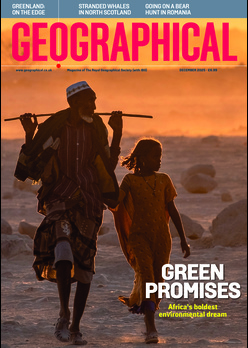
A huge iceberg has broken away from the Brunt Ice Shelf in Antarctica near the British Antarctic Survey’s Halley Research Station
A formerly dormant chasm has spread through the Brunt Ice Shelf, calving a giant iceberg almost the size of Greater London.
British Antarctic Survey (BAS) scientists at the Halley Research Station reported that the 1550-square-kilometre iceberg split from the shelf on Sunday 22 January. It’s the second major calving to have happened in the area in the last two years.

BAS glaciologists have been monitoring the behaviour of the Brunt Ice Shelf since the growth of vast cracks, which descend through the 150-metre ice shelf to the sea, were first detected a decade ago. ‘Our glaciologists and operations teams have been anticipating this event,’ says Dame Jane Francis, director of BAS. Multiple daily measurements, relayed by GPS instruments that surround Halley station, and satellite images provide BAS scientists with a good idea of how the ice shelf is deforming and moving over time.
During the Antarctic summer of 2016-17, BAS announced that the research station would be relocated to avoid it being ‘carried away when an iceberg eventually formed’. Since then, staff have only been deployed to the station during the Antarctic summer (November to March), due to concerns that the spreading ice cracks could cut off the evacuation route in an emergency.
In January 2021, one of these cracks (called North Rift) spread through the ice at speeds of up to one kilometre a day, sheering off an iceberg the size of Bedfordshire.
Unlike the rapid thinning seen on Larsen C Ice Shelf on the eastern side of Antarctica (in the Weddell Sea), these newly calved icebergs are part of the natural behaviour of the Brunt Ice Shelf. They are ‘not linked to climate change,’ says professor Dominic Hodgson, a glaciologist at BAS.
The area of the ice shelf where the research station is located currently remains unaffected by the recent events. Currently 21 staff are on station working to maintain the power supplies and facilities that keep the scientific experiments operating remotely through the winter. Their work will continue until they are collected by aircraft around 6 February.





